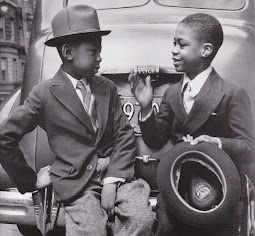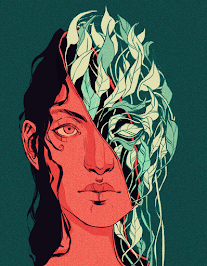May 2022
An art activity for visiting student groups, a pile of young people and I on our bellies in a gallery. A girl tells me about Home, except she has two of them - the Bronx, where we are - and Mexico, a place she told me she has never been. As soon as I was alone I wrote down the exchange, knowing it would be important later. I wonder about the idea of home being something you yearn for, but not necessarily a place you have experienced - does that feeling of not quite belonging get embedded in your sense of self? At what point does it get passed down, becoming inextricable from a cultural identity? When will belonging supplant the narrative of not belonging? Can it do that in such a way that doesn't erase an entire sense of self?
Once, when I was about 11 (around the same time I decided I was too grown up for stuffed animals and put them all in a black trash bag) watching some movie with a sweet moment where a father walks a daughter down the aisle to be married - I cried for possibly the only time I can remember about my lack of a father, the realization of a particular series of coming-of-age narratives I was not going to experience. It stands out in my memory because I'd never witnessed anything about being married that made it seem desirable, and watching fathers with their young daughters made me deeply uncomfortable for a long time, a deep sickened space opening up in my core. Visceral, tangible, that hole in my being.
Identity Map Making, Curriculum notes/questions January 2023
*my first group of students to do this will also be reading The House on Mango Street, we will make covers for their own books they are writing in response to this intense piece of literature.
What parts of me are connected to the landscapes I've inhabited? What landscapes do I have to work with in the first place?
Swampland, definately. - but what part of me? The guts? Our organs are associated with instinctual, guttural/gut feelings and responses, something all of us could practice listening more closely to. The Everglades have such a unique ecology, the marshland reminds me of learning about our earliest cellular development, before the embryo has any structures other then inside/outside and proto veins. Lake Alice features prominently in my youth, with its wooden pathways through lush greenery and spiderwebs and tropical birds nesting everywhere, alligators napping next to picnics in the wet heat.
Coffee Shop - always drinking coffee with my mother, from a pretty young age, pot after pot. Reading in various coffee shops and bookstores while she flipped through magazines, sourcing images for her moodboard. The smell, flavor of espresso, like tasting comfort food from my youth. Coffee grounds, rich as soil, grounding me in a way my mother never could. I think she used it to ground herself too, or like a pacifier, so the voids we were born with were distracted by the pungent, arresting qualities inherent in coffee beans. I wonder if we were hiding in those coffee shops together, from our life. Since it seems to be such a sensorial experience, is it connected to my nose, mouth? My hyper acidic stomach, that nearly gave up a bunch of years ago because I was only consuming coffee and adrenaline to survive? A quadrant of my brain/nervous system?
Kitchen - the place I feel most joyfully connected to myself, where all of the thing people describe feeling while doing Art ACTUALLY manifest for me. Deep trust, intuitive, responsive, meditative. I know when to add more flour to change a consistency of batter or dough, I think of the worn Betty Crocker cookbook in red gingham that my mother used. The large bubbling pots of thick soups and stews I leave for anyone in the household to consume, where I've magicked all the vegetables I normally avoid, robust umami smell spilling into the hallway. Sometimes I sing along to music from my childhood, or go hours not speaking as I move around here. Is this my heartbeat, my center? My spine, foundation? A quiet part of my brain?
Work - Art to me is the same as any other work I do in the world - it is how I interface with society at large, a place full of boundaries and mirrors to explore connection and see myself more clearly BECAUSE of those boundaries. Is work my voice? My skin? my hands? My clothing? Maybe New York City has become my armor. Shaped like me and deeply protective. Layered over earlier parts of myself. Maybe the buttressed ceiling of the Park Avenue Armory is my lungs - I learned how to fill that space with my voice, where I found a strength I never knew was possible.
Where does my childhood live? I was reminded earlier of my siblings and cousins playing in grandma's pool, often with no supervision, during the summers for 2 weeks ever year. Playing with my early best friend Alisha who lived down the street, and being in her world could allow me to forget mine, and the man I came home to, snarling in my face with blood colored eyes, breathing cigarettes and alcohol into my nostrils and mouth. Being on the playground also sticks out clearly, metal structures I adored scaling - are those my bones? Is play on those structures actually foundational to my being in some way, like the tensegrity of our actual bodies?
There is also this damp, crumbling, overgrown section of Gainesville - these cute simple victorian structures we called the student ghetto, that I always imagined living in, very like where I ended up the year I lived in Richmond's fan district. And my neighborhood growing up, swamped in wisteria vines, emanating the most incredible yummy sweet smell. The duck pond area. The hippodrome, where my creative vision was fed by what remains some of the most inspired theatre I've ever witnessed. Garage sales with my grandmother. The specific weather/air quality of Easter, Halloween and the Gator's Homecoming Parade. The baking heat of being caught in traffic in the afternoon, in a car with no ac, the car tan deepening since I loved the force of the sun pressing itself into my freckled, scots-irish skin. That car. A copper 78' chevy Nova, no speedometer, 8 cylinders - we cruised up and down the length of florida in that thing, visiting various penitentiaries, the year mom was a travel agent: disney world, cape Canaveral where we stayed at a hotel on Cocoa Beach and did all the astronaut simulations, I was the only one brave enough to try the G force one. 4 G's and I had to lay down for an hour because I was so sick afterwards. Tubing on the itchetucknee river, Uncle Dave's boat on the St. Johns. Pulling in crab traps and fishing off his dock, looking for alligator eyes after dark with a flash light. The first time he had me spice the water for a crab boil. The sound of cicadas, nighttime in Florida is LOUD. Watching the bat house next to lake alice in twilight. The bats swishing past us when we turned the pool lights on and swam at night, after grandma went to bed - the lights called the bugs to dive blindly in the water as we shrieked and giggled in the neon green glow.
This is a gentler way in, compared to the huge questions I was trying to ask last year. I can be here. I can hold others here.
Song that always made me think of my father:
The Way by Fastball
They made up their minds
And they started packing
They left before the sun came up that day
An exit to eternal summer slacking
But where were they going without ever knowing the way?
They drank up the wine
And they got to talking
They now had more important things to say
And when the car broke down
They started walking
Where were they going without ever knowing the way?
Anyone can see the road that they walk on is paved in gold
And it's always summer
They'll never get cold
They'll never get hungry
They'll never get old and gray
You can see their shadows wandering off somewhere
They won't make it home
But they really don't care
They wanted the highway
They're happier there today, today
Their children woke up
And they couldn't find 'em
They left before the sun came up that day
They just drove off and left it all behind 'em
But where were they going without ever knowing the way?
Anyone can see the road that they walk on is paved in gold
And it's always summer
They'll never get cold
They'll never get hungry
They'll never get old and gray
You can see their shadows wandering off somewhere
They won't make it home
But they really don't care
They wanted the highway
They're happier there today, today
Anyone can see the road that they walk on is paved in gold
And it's always summer
They'll never get cold
They'll never get hungry
They'll never get old and gray
You can see their shadows wandering off somewhere
They won't make it home
But they really don't care
They wanted the highway
They're happier there today, today








































%20_%20Twitter.jpeg.jpg)




